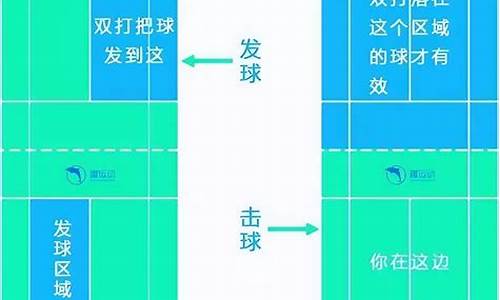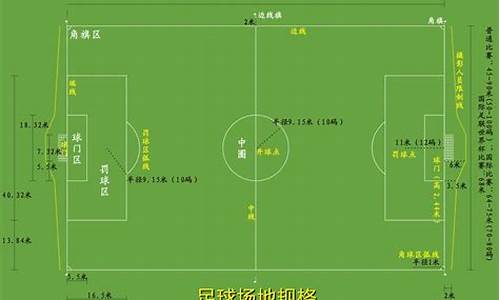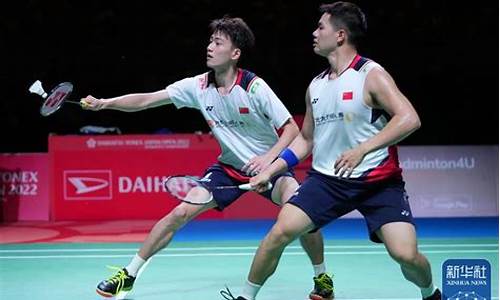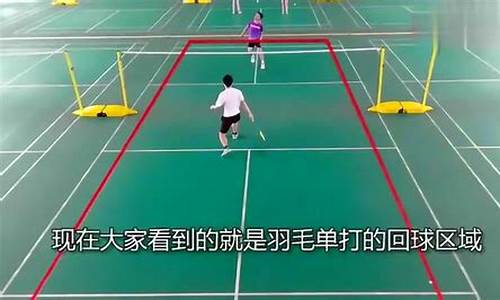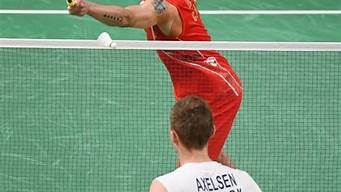您现在的位置是: 首页 > 体育资讯 体育资讯
victorpu乒乓球_eva乒乓球
tamoadmin 2024-08-17 人已围观
简介1.粘海绵用什么胶比较好?2.匹克球是一种什么球3.美津浓乒乓球鞋和羽毛球鞋有什么不同?4.蝴蝶乒乓球鞋l5和l7哪个舒服5.COSPLAY道具求助6.用英文介绍一个破世界纪录的运动员410是NewBalance的经典复古跑鞋,不适合强度特别大的运动,因为鞋底材料比较薄,技术含量也不高,保护,减震不像别的鞋款那么到位。远足,压马路应该也没问题。你看看鞋底的颗粒就知道它不适合磨损特别大的运动,颗粒磨
1.粘海绵用什么胶比较好?
2.匹克球是一种什么球
3.美津浓乒乓球鞋和羽毛球鞋有什么不同?
4.蝴蝶乒乓球鞋l5和l7哪个舒服
5.COSPLAY道具求助
6.用英文介绍一个破世界纪录的运动员

410是New
Balance的经典复古跑鞋,不适合强度特别大的运动,因为鞋底材料比较薄,技术含量也不高,保护,减震不像别的鞋款那么到位。远足,压马路应该也没问题。你看看鞋底的颗粒就知道它不适合磨损特别大的运动,颗粒磨平了多恐怖啊。所以肯定是小强度的室内或者说地板上的运动为主,我能想到的运动恐怕就是gym运动,或者业余的乒乓球,健身操。
中底分两层,一层是普通的泡沫,即EVA,同时有一层IMEVA。Injection
Molded
EVA
IMEVA是由EVA注入中底的倒模而成,其分子构造较为平均。若鞋底注入这种物料,便能更持久抗压。由IMEVA制成的中底较C-CAP?
制成的中底较为坚固,踩上去也会更硬一些。
硬胶外底说是持久耐磨,但是没用NB专利的Ndurance耐磨黑橡胶,所以结果效果可想而知。总之,磨损会是这鞋的问题,当然也要视你的体重定。
鞋面透气应该没有问题
粘海绵用什么胶比较好?
健身时穿建议购买跑鞋,综合训练鞋和跑鞋的区别如下:
1、用途不同
综合训练鞋就是专业运动员在训练反应,练习基础动作的时候穿的,适合多种运动。又称为“全能鞋”,对于非专业运动员来说可以穿着做3种以上的非专业运动,包括网球、羽毛球、乒乓球。而跑鞋是专为跑者而设计的鞋款。
2、版型不一
综合训练鞋前脚掌和后跟都非常宽大,具有很强的适应性,满足各种训练需求,鞋面通常为合成皮和轻质网材制成,中底常用铸模EVA制成,大小类似于篮球鞋,外底多用无印迹橡胶。跑步鞋版型则更“修身”,比较合脚,包裹性非常好,贴合双脚,鞋体通常较轻。
3、外观不同
综合训练鞋颜色单一,穿这种鞋的人很少,性能也不是很好,不实用,多数情况下仅限于专业运动员使用。跑步鞋的款式一般更倾向于当下的时尚潮流,颜色也更新丰富明亮。
扩展资料:
健身鞋类选择方法
平足,即没有明显的足弓。足印清晰完整,足部内侧曲线没有明显的向内凹陷。这意味着跑步时,脚掌会向内翻转,极易因为足弓使用过度而导致疲劳,同时容易造成运动损伤。此时需要选择平稳性较佳的训练鞋。有"步伐调整"或者"平稳运动"性能,或有双层鞋底夹层的鞋子是不错的选择。
高足弓,足部内侧曲线明显向内弯曲,中心位置由于悬空而未留下清晰的足印。这是最少见的足型,跑步时脚掌会向外翻转。由于长期跑步易使足弓下陷,导致脚掌变长。标有"高弹性"和"有缓冲减震垫层"的鞋子是不错的选择,一定要避免选择平稳性能好的训练鞋。
百度百科-跑鞋
百度百科-综合训练鞋
匹克球是一种什么球
一般的胶水用于EVA泡沫塑料制品粘接时,容易对EVA泡沫产生腐蚀。因此在进行EVA泡沫塑料进行粘合时,可以选用JL-6120EVA泡沫专用胶水,单组份新型溶液胶,具有不腐蚀材质,固化速度快,操作方便、高强度、高弹性、胶膜柔软、耐水、耐酸碱性能好、优良的耐水性能、用途广,长期储存不会变质等优良特点。其最大的特点就是对EVA泡沫没有任何腐蚀做用。
END
使用方法
1
表面处理:清洁粘接面的的油污、灰尘等,保证粘接面的清洁干燥,必要进可对粘接面用处理剂进行处理;
2
涂 胶:将胶液直接均匀涂布于两粘接面上,晾置5-10分钟,待溶剂挥发后,将两粘接面对齐粘合,可加压1-2小时;
3
固化时间:24小时可达实用强度,72小时达最大强度。
END
注意事项
大批量使用时,保证工作操作场所的良好通风,远离火源热源;
涂胶不宜过厚,以免影响固化时间和效果。
美津浓乒乓球鞋和羽毛球鞋有什么不同?
匹克球是用球拍击球的一种运动。
一、匹克球的简介
匹克球是从美国西雅图的本不里奇岛兴起的。说它是网球、羽毛球和乒乓球的混合运动,那是最妥当不过。它是由两个人发明的。
“匹克”球的名称来自发明人之一的一条狗;在开始发明试打的时候,那条名为匹克的狗常常叼着球跑。
二、特色
在身体的活动量和活动度上,匹克球比羽毛球和乒乓球的活动度和活动量大,所以在锻炼身体上比羽毛球和乒乓球好。
匹克球的活动量和运动量比网球为小,打不太动网球的人就适宜于打匹克球作为经常运动的锻炼项目。匹克球适宜于各种年龄。
三、场地
匹克球的场地和羽毛球的场地完全相同。使用的球大小如网球,为硬塑料制成的薄壳中空球,有26个直径约1厘米的孔。
横握的球拍形如较大的乒乓球拍,最初是木制的,有较轻的玻璃纤维、EVA, PE材料,混合材料和碳纤维板的。
匹克球的规则
1、球员
匹克球比赛通常是双打,每队两名球员,分为发球方和接发方。球员必须站在自己半场的底线上进行发球。
2、发球
发球方从自己的半场底线发球,跨界发球。发球必须投掷并击球,发球方可以选择发球跑位或直接发球。
3、触地规则
球发出后,必须在接触地面前先经过网线,然后再打入对方半场内。如果未经过网线直接射入对方半场,或者在射入对方半场后,落地前未触碰到地面,则判定为违规。
4、接发
接发方必须在接球前让球落地一次。球不可在空中接到对方半场内。
5、回击
每队可以用球拍回击球,球可直接击打到对方半场内,或先击打到地面再过网。
6、反击次数
每队可以连续击球,未落地前可持续游击。
7、分数计算
得分用15、30、40、胜利的计分法,即先得四分为胜。当为40平时,胜方需再赢两分才能取胜。
8、平局
若为40平,即为平局,双方需争夺连胜两分以取胜。
9、二发
若发球方在为平局时失误,将进行一次二发,即重新发球一次。
10、网球
球碰到网并成功过网被对方接到算作正常比赛。
11、界外球
球打过了场地边界线或是触碰到束网之外,即被判定为界外球。
蝴蝶乒乓球鞋l5和l7哪个舒服
乒乓球鞋与其它的运动鞋略有区别:
第一、鞋底比较薄,较薄的鞋底有比较好的脚感;弹性甚至不如一般的慢跑鞋。作为需要频繁起停转向的球鞋,包脚是最先要考虑到的性能,整体成形要好。鞋体本身比较柔软。鞋底薄一般是指的EVA缓冲层比一般运动鞋要薄,太厚容易崴脚。天然橡胶底来提供良好的弹性与摩擦。鞋帮也要较低。另外,鞋底的弯曲时弯折靠近脚尖有利于前脚掌的蹬地。鞋头需要额外加固,避免被脚趾顶变形。
第二、好的乒乓球鞋对脚掌的承托比较好
第三、乒乓球运动范围小,幅度也小,特别是对启动速度要求高,如果鞋底过厚,缓冲时间太长,不利于快速启动。因此在选择乒乓球鞋时,应该选择软硬适中,有一定厚度的专业乒乓球鞋,这样既能起到缓冲和保护作用,也能保持乒乓球运动所要求的迅速的启动能力。
COSPLAY道具求助
l7。
乒乓球鞋鞋底更薄,更薄的鞋底脚感更好,甚至不如普通慢跑鞋有弹性。作为一款需要频繁启停转的球鞋,遮脚是首先要考虑的性能,整体造型更好。鞋子本身是软的。鞋底薄一般是指EVA缓冲层比普通运动鞋薄,太厚容易扭伤脚踝。天然橡胶鞋底提供良好的弹性和摩擦力。鞋面也要低一点。另外,脚掌弯曲时靠近脚趾,有利于前脚掌着地。鞋头需要额外加固,以免被鞋头变形。
日本蝴蝶乒乓球用品公司是世界顶级乒乓球用品的生产厂商之一。受到了世界乒乓球爱好者的广泛欢迎和喜爱。
用英文介绍一个破世界纪录的运动员
衣服的布料通常是以制服呢为主体。图上的COSER好像用了少量的亮面缎(蓝色部分);白色部分应该就是制服呢料了(但也可能是其他布料)。
然后身上的盔甲可以用EVA来做,通常一些大型的道具,首选材料就是EVA,即使是新手也很容易上手。EVA算是比较常见的,比如我们经常见到的地垫,就是EVA。EVA加热后(打火机,吹风机)可以塑形,比较好切割。EVA也有很多种厚度,图上的厚度应该是2CM左右,然后在用1CM左右的EVA来做盔甲的边。
切割EVA的时候我建议使用“美工刀”,切出来的线条会比较好看,也可以刻花纹。
EVA制作完后可以用丙烯上色或喷漆。
盔甲上圆形的东西可以用乒乓球啊,对切一半,上蓝色,就可以粘在EVA上了。
以上的材料可以在淘宝购买,EVA在建材市场也有卖。
女子撑杆跳高世界纪录保持者伊辛巴耶娃
Yelena Gadzhievna Isinbayeva (Russian: Елена Гаджиевна Исинбаева, ISO 9: Elena Gad?ievna Isinbaeva; born June 3, 1982(1982-06-03)) is a Russian pole vaulter. She is a two-time Olympic Gold Medalist (2004 and 2008), was elected Female Athlete of the Year by the IAAF twice (2004 and 2005), and Sportswoman of the Year by Laureus. On July 22, 2005, she became the first female pole vaulter to clear 5.00 metres.
At the age of 26 Isinbayeva is seen as the best female pole vaulter in history. She has already been a 9-time major champion (Olympic, World outdoor and indoor champion and European outdoor and indoor champion).
Isinbayeva's current world records are 5.05 m outdoors, a record Isinbayeva set at the Summer Olympics Games in Beijing on August 18, 2008, and 4.95 m indoors, a record set at the Donetsk indoor meeting on February 16, 2008. The former was Isinbayeva's twenty-fourth world record.
Isinbayeva's mother is of Russian ethnicity, while her father is of Tabasaran ethnicity. She was born in Volgograd
1987-19
From the age of 5 to 15, Isinbayeva trained as a gymnast in her hometown of Volgograd. She ultimately left the sport because as she grew she was considered too tall to be competitive in gymnastics, ultimately attaining a height of 1.74 m (5' 8?").
1998-2002
In her first big competition, the 1998 World Junior Championships in Annecy, France, Isinbayeva jumped 4.00 m but this left her 10 cm away from the medal placings. In 1999, Isinbayeva improved on this at the World Youth Games in Bydgoszcz, Poland when she cleared 4.10 m to take her first gold medal.
At the 2000 World Juniors Isinbayeva again took first place clearing 4.20 m ahead of German Annika Becker. The same year the women's pole vault made its debut as an Olympic event in Sydney, Australia where Stacy Dragila of United States took gold.
2001 saw another gold medal, this time at the European Junior Championships with a winning height of 4.40 m.
Isinbayeva continued to improve in this relatively new event and 2002 saw her clear 4.55 m. at the European Championships finishing 5 cm short of compatriot Svetlana Feofanova's gold medal winning jump.
2003
2003 was another year of progression and saw Isinbayeva win the European Under 23 Championships gold with 4.65 m (in Bydgoszcz). She went onto break the world record clearing 4.82 m on July 13 at a meeting in Gateshead, England which had made her the fourite to take gold at the World Championships the following month, but lack of technique saw her only win bronze with Feofanova taking gold and Becker, this time, pipping her for the silver
2004
2004 saw the women's pole vault really start to mature as an event and during a meeting at Donetsk, Ukraine, Isinbayeva set a new indoor worlds best, with a height of 4.83 m only to see Feofanova increase this by a single centimetre the following week. The following month at the World's Indoor in March Isinbayeva broke this with a gold medal winning jump of 4.86 m beating reigning indoor & outdoor champion Feofanova into bronze with reigning Olympic champion Dragila taking silver.
June 27 saw Isinbayeva return to Gateshead and once again the world record mark was improved to 4.87 m. Feofanova bounced back the following week to again break the record by a centimetre in Heraklion, Greece.
On July 25 in Birmingham, England, Isinbayeva reclaimed the record jumping 4.89 m and five days later in Crystal Palace, London, added a further centimetre to the record.
The pole vault was one of the most eagerly awaited events at the 2004 Summer Olympics in Athens, Greece and although the competition did not reach the heights that were anticipated the rivalry between Isinbayeva and Feofanova brought the event alive. With all of the other events finished the whole crowd were focused on the pole vault.
When Feofanova failed at 4.90 m the gold medal was Isinbayeva's, and she then rubbed salt into her compatriots wound by attempting and clearing a new world record height of 4.91 m. She broke her own record later that year at the Memorial Van Damme in Brussels with a 4.92 m jump.
2005
In July 2005, Isinbayeva broke the world record four times over three separate meetings. First in Lausanne, Switzerland, she added an extra centimetre to her own mark clearing 4.93 m. It was the 14th world record of Isinbayeva's career coming just three months after she broke her own indoor mark (4.89 m) in Lievin. Eleven days later, in Madrid, Spain, she added an additional 2 cm to clear 4.95 m. In Crystal Palace, London on July 22, after improving the record to 4.96 m, she raised the bar to 5.00 m. She then became the first woman pole vaulter to clear this metric barrier, achieving the mark with a single attempt. At the 2005 World Championships in Athletics, she once again broke her own world record, performing 5.01 m in her second attempt, and winning the competition.
2006
At an indoor meeting on February 12 in Donetsk, Ukraine, Isinbayeva set a new indoor world record. She cleared 4.91 m. In August she won the gold medal at the 2006 European Athletics Championships in Gothenburg with a CR of 4.80 metres. This was the only gold medal missing from her collection until that time. In September she won the World Cup, representing Russia, in Athens.
Isinbayeva was crowned Laureus World Sports Woman of the Year for the 2006 season.
2007
Isinbayeva being interviewed after her victory at the 2007 World Championships in Athletics in Osaka.On 10 February 2007 in Donetsk, Ukraine, Isinbayeva broke the world indoor pole vault record again, by clearing 4.93 metres. It was Isinbayeva's 20th world record.
On 28 August 2007 Isinbayeva repeated as world champion in Osaka at the 2007 World Championships in Athletics with a modest 4.80 m, then failing three times at setting a new world record at 5.02 m. Her competition did no better than 4.75 m (next 3 compes).
2008
During the indoor season, Isinbayeva set her twenty-first world record, clearing 4.95 metres on 16 February 2008 in Donetsk, Ukraine. A few weeks later, in Valencia, Spain, Isinbayeva won the World Indoor Championships over Jennifer Stuczynski. Both vaulters achieved the same height, with Isinbayeva winning by virtue of fewer unsuccessful attempts.
On July 11, at her first competition of the season, Rome's Golden Gala, Isinbayeva broke her own world record, clearing 5.03 metres. This was her first world record outdoors since the 2005 World Championships. Isinbayeva stated that she had tried so many times at 5.02 metres and was still unsuccessful, her told her to change something and so she attempted 5.03 metres.This record came just as people began to speculate her fall from the top of pole vaulting, as American Jennifer Stuczynski cleared 4.92 metres at the American Olympic Trials. Isinbayeva stated that this motivated her to maintain her reputation as the world's greatest female pole vaulter. A few weeks later, at the Aviva London Grand Prix, Isinbayeva and Stuczynski competed together for the first time of the outdoor season. Isinbayeva won the competition, with Stuczynski finishing second. Both attempted a new world record of 5.04 metres. Isinbayeva was tantalizingly close on her final attempt, with the bar falling only after Isinbayeva had landed on the mat.
Isinbayeva broke her 19-day old world record on July 29, in Monte-Carlo, Monaco. She cleared 5.04 metres, her twenty-third world record, on her final attempt.
At the 2008 Summer Olympics in Beijing on August 18, Isinbayeva prolonged her reign over the Olympic Title, by clearing 5.05m, her 24th world record.
Setting 24 world records (14 outdoor and 10 indoor), staying virtually unbeaten since the Olympic Games of 2004 (winning nine straight gold medals in indoor and outdoor championships) and being elected IAAF Female Athlete of the Year in 2004 and 2005, Isinbayeva has established herself as one of the most successful athletes of her generation.
In August 2005, top UK pole vault Steve Rippon said to the BBC that "she [Isinbayeva] is one of the few female pole vaulters I look at and think her technique is as good as the men's. In fact, the second part of her jump is probably better than any male pole vaulter currently competing. She has a fantastic technique, she's quite tall (almost 5 ft 9 in) and she runs extremely well."
These statements are confirmed by close observation of her jumps; in detail, Isinbayeva's high level of body control (courtesy of her gymnastics background) especially pays off in the so-called "L-Phase", where it is vital to use the pole's rebound to convert horizontal speed into height. Common mistakes are getting rebounded away in an angle (rather than vertically up) or inability to keep the limbs stiff, both resulting in loss of vertical speed and therefore less height. In Isinbayeva's case, her L-Phase is exemplary.
Her father, Gadzhi Gadzhiyevich Isinbayev, is a plumber and a member of a small (70,000-people strong) ethnic group of Tabasarans who mostly live in Dagestan. Her mother, a shop assistant, is an ethnic Russian. Isinbayeva also has a sister named Inna. Isinbayeva was born in a modest environment and remembers that her parents had to make many financial sacrifices in her early career.
She has a bachelor's degree after graduating from the Volgograd State Academy of Physical Culture, and is currently studying for her master's. In the Russian club competitions she represents the railroad military team; she is formally an officer in the Russian army, and on August 4, 2005 she was given military rank of senior lieutenant. On August 19, 2008 she was promoted to the military rank of Captain.
She features in Toshiba ads promoting their entire product line in Russia.
Records
Youth 4.10 m Bydgoszcz, Poland 1999 , July 18
Junior Championship 4.20 m Santiago, Chile 2000 , October 8
Junior 4.46 m Berlin, Germany 2001 August 2
Junior 4.47 m Budapest, Hungary 2001 February 10
World (O) 4.82 m Gateshead, England 2003 July 14
World (O) 4.87 m Gateshead, England 2004 June 27
World (O) 4.89 m Birmingham, England 2004 July 25
World (O) 4.90 m London, England 2004 July 30
World (O) 4.91 m Athens, Greece 2004 August 24
World (O) 4.92 m Brussels, Belgium 2004 September 3
World (O) 4.93 m Lausanne, Switzerland 2005 July 5
World (O) 4.95 m Madrid, Spain 2005 July 16
World (O) 4.96 m London, England 2005 July 22
World (O) 5.00 m London, England 2005 July 22
World (O) 5.01 m Helsinki, Finland 2005 August 12
World (O) 5.03 m Rome, Italy 2008 July 11
World (O) 5.04 m Monaco 2008 July 29
World (O) 5.05 m Beijing, China 2008 August 18
World (I) 4.83 m Donetsk, Ukraine 2004 February 15
World (I) 4.85 m Athens, Greece 2004 February 20
World (I) 4.86 m Budapest, Hungary 2004 March 6
World (I) 4.87 m Donetsk, Ukraine 2005 February 12
World (I) 4.88 m Birmingham, England 2005 February 18
World (I) 4.89 m Lievin, France 2005 February 26
World (I) 4.90 m Madrid, Spain 2005 March 6
World (I) 4.91 m Donetsk, Ukraine 2006 February 12
World (I) 4.93 m Donetsk, Ukraine 2007 February 10
World (I) 4.95 m Donetsk, Ukraine 2008 February 16
